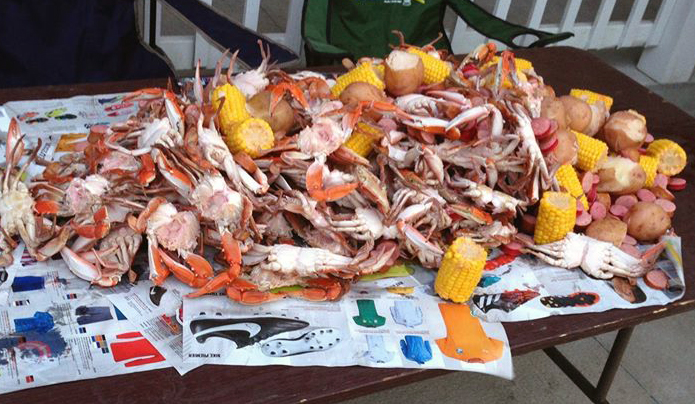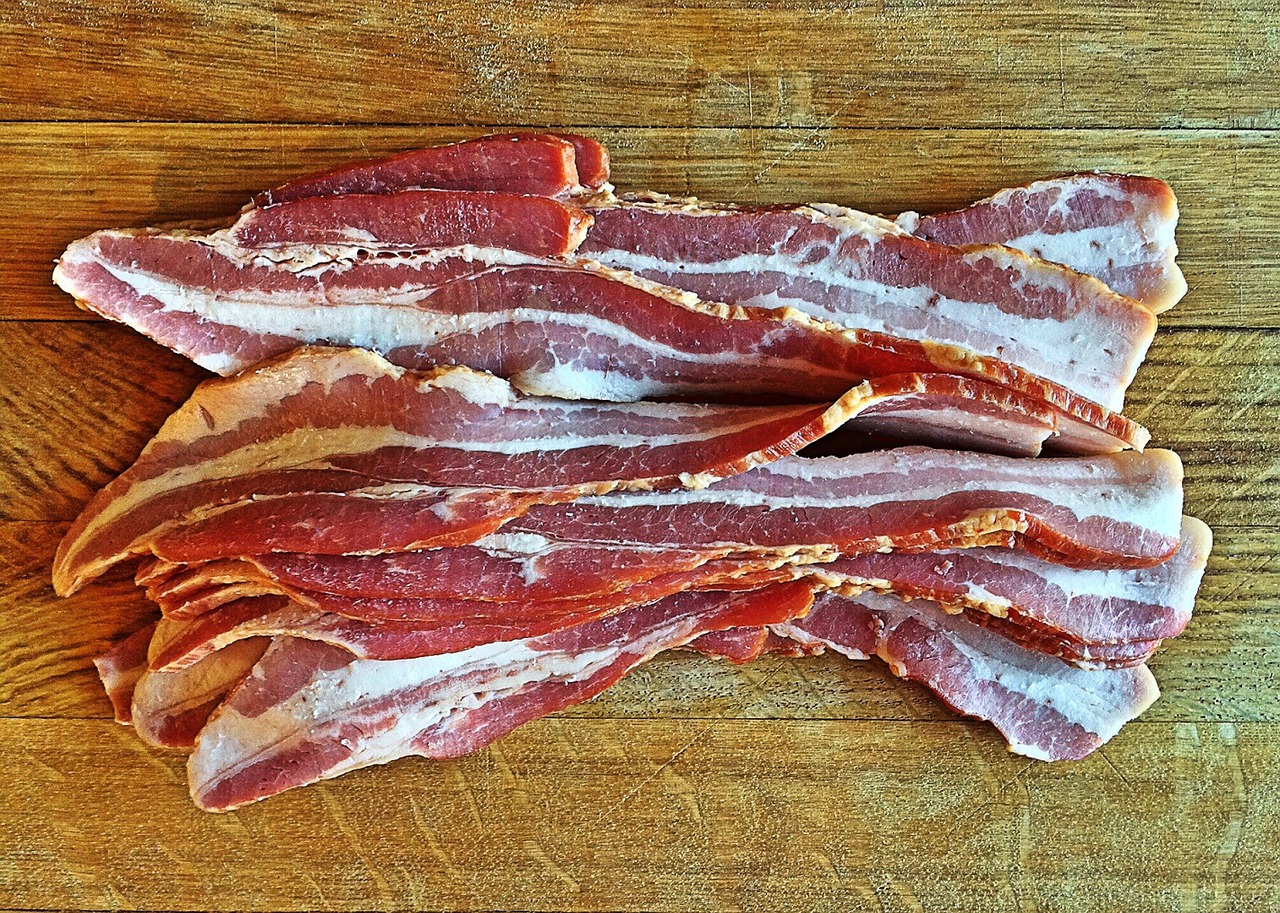It will truly connect us to the farm, the sea and each other, and properly honor our ancestors and the Southern coastal way of life, if only we will take the time to do it right.
We’ve all seen the Southern magazines with their articles, “How to Make the Perfect Lowcountry Boil.” It’s enough to make me want to wipe my nostalgic tears with their glossy, color pages. If only they knew.
Granny never made the headlines of Bon Appétit or Southern Living, but she knew a little something about good Lowcountry Boil. The perfect – no, the Ultimate – Lowcountry Boil does exist, but the recipe can only be found if you are willing to take the time that Granny did and start from scratch. All the way from scratch.
In her younger days, the DeWitt men once convinced Granny to leave the farm and go to the river for a day. They say she wore her apron the entire time, even in the boat. The story goes that as the sun set on a good day of crabbing and fishing, Granny made the boys wade out into the river, where the water wasn’t as muddy, and fill a stainless steel pot with the salty waters of the Coosawhatchie, and she boiled blue crabs and freshly-netted shrimp on the river bank right in the sacred waters from whence they came.
I wasn’t there, born too late, but God what I would have given to have been at that crab cracking! But the oldest son of her oldest son was there in her golden years, and that was good enough. It would usually be just Granny and me in the garden, until I was old enough to discover the joys of saltwater for myself, when the older boys would return from the river.
“Go and get this bucket full of taters and onions,” Granny would command. “And see if that sweet corn is ready to break. I’ve got to go call everyone and tell them to come over.”
Calling everyone, mind you, meant dialing the old rotary phone. And Granny had a party line with everyone on Rock Springs Road, so the neighbors got invited along with the family.
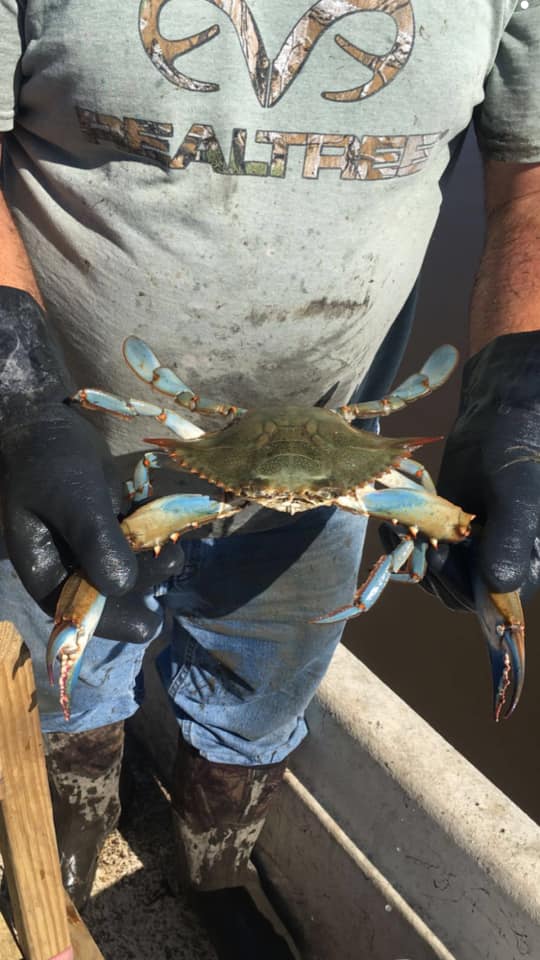
Photo by Patty Ann Smith
To the eyes of a ten-year old, when the uncles and older cousins returned from a trip to the river, they return not as mere men, but as legendary, conquering heroes – arms and legs red from the sun, faces red from excitement and likely cold brews, tongues full of stories. These saltwater-smelling gods always came bearing the bounty of the inland seas. Often, it was coolers filled with live crabs and monster shrimp. Occasionally, baskets full of oysters pried from muddy beds were cooked on a simple fire, cement blocks holding a sheet of tin, smothered with croaker sacks and doused with a garden hose to steam open. Once, they produced several small sharks, and Granny cut them into steaks, dipped them in corn meal, and fried them along with some yellow squash. Fried shark goes mighty fine with ketchup, in case you were wondering.
Once, one of the uncles even brought home a girl he picked up at the river. Tanned, hair bleached by the sun, she wore some Daisy Duke shorts and a bikini, and smelt funny when she gave me a hug and kissed my cheek. Cousin Perry told me not to sit too close to her, or let her kiss me on the mouth, and Granny asked her what church she went to. But Granny fed her, because Granny fed everyone who came to her door, and I sat right beside her while the men poured Budweiser into the crab pot when Granny wasn’t looking. Granny called it Red Snapper, not Bud, but she wouldn’t begrudge a man a cold beer. It was whisky that would get a grown man flogged.
Regardless of the drink, they dumped the Lowcountry Boil onto a long table covered with newspapers, and we all dug in even as the pile was steaming. The girl asked for butter and ketchup. All I needed was elbow room. The family would sit and eat for what seemed like hours, but Granny never really ate that much. She just picked out blue crab meat into a pile on a plate and she would slap your hand if you tried to steal any. But come Sunday, there would be a Deviled Crab Casserole on her table, soon as church let out.
But here I have digressed damn near 40 years. My apologies. And this isn’t about Granny, because I am sure you had one of your own. This is about a recipe. Let’s get down to it, shall we?
The Ultimate Lowcountry Boil
This is Granny Irene DeWitt’s recipe. There are no exact measurements, and yet you must follow the recipe as closely as possible. No, she can’t go and cut a switch to whip your backside anymore, but you will be missing the whole point.
Step 1. You or a blood relative must catch the shrimp or blue crabs yourself in Georgia or Carolina waters, and they must be cooked the same day. Someone in the family must have sunburn and saltwater chaffing, and at least one crab pinch or two, or the whole recipe will be a flop. We will be checking the birth certificates of those crabs, so if you show up with Alaskan snow crab clusters from the Piggly Wiggly we will have to dump them into the swamp branch and you won’t get invited back next time.
Step 2. Make the calls. That’s right, get on the phone and call the family, friends and neighbors. God meant for Lowcountry Boil to be shared. Like other worldly pleasures practiced alone, eating Lowcountry Boil solo may cause you to go blind.
Step 3. Send a youngster to the garden to fetch the perfect size red potatoes (about golf ball size), onions and sweet corn, all of which were fertilized by your sweat and chicken compost produced by your Granny’s hens. When you are done shucking the corn, you must take the shucks and the silks straight to the cows and that ornery bull. They will love you for it. If there are any silkworms in that corn, save them for bream bait or for the chickens (See Step 7.)
Step 4: Your Granny, despite her bad leg, must go dig around in the old, rusty-top freezer and find the sausage. We are talking venison sausage from that buck you killed on her place last October, and smoked pork sausage from a hog your family raised, butchered and smoked right on the old home place. (Perhaps you should have started this recipe during deer season and hog-killing time. Well, you will do better next time, I’m sure.) Just for color, you are allowed your first of only two store-bought ingredients: Georgia red sausage links. Carolina Pride will work just fine.
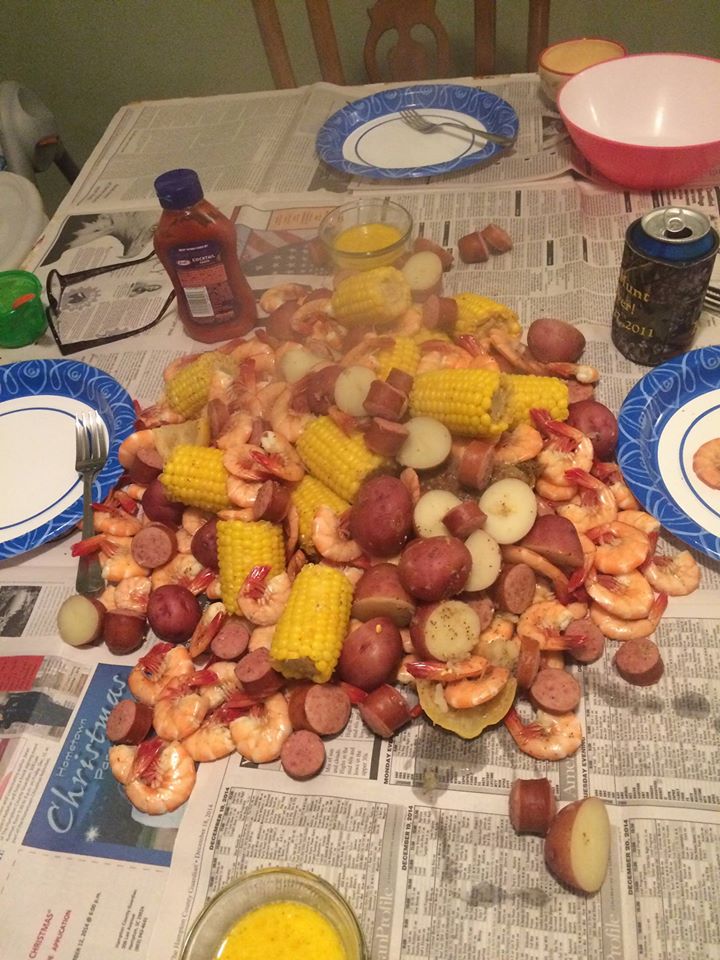
Photo by Jim Thomas
Step 5: Get the ingredients to a boil in the proper order. If you have to ask what that is, and how long to boil each, then you aren’t qualified to read this article. You are allowed your second store-bought item: a crab boil seasoning that is produced south of the Mason Dixon Line, like Zatarain’s. Finally, pour in between one to three Red Snappers, depending on if Granny is looking, how big your pot is, how many cold ones you have left to drink, and if tomorrow is the Sabbath and the beer store will be closed.
Step 6: When the Lowcountry Boil is ready (don’t overcook the shrimp!), an adult must say “The Grace” while the children are looking around to see who has their eyes open. Then the Boil must be dumped on a local, Southern newspaper and served outdoors, with at least a fan or two blowing to keep away the gnats and skeeters. If you dump your Boil on the Wall Street Journal or The New York Times, you have ruined it and we can’t be friends anymore.
Step 7: Enjoy, with elbows working port and starboard, and with melted butter and more Red Snapper, if you like. As good as it is, you must not eat all of the crabs. Granny – whoever “Granny” is to you, whether it be grandmother, mother or wife– will need some to make Deviled Crab Casserole for Sunday as soon as church lets out. It’s great with ketchup, in case you were wondering.
Step 8: When you are done, lean back and groan. You will need to wash your hands and face. Some of you may need a shower. But before you get up from the table, you must plan your next Lowcountry Boil, because you all know that these wonderful get-togethers are few and far between, and Granny and Granddaddy won’t be with us forever.
Step 9: Finally, clean up the mess. There will be shrimp hulls and crab shells aplenty. These must go directly into the chicken yard or the hog pen, where the livestock will dispose of it with gusto. The soggy newspaper? Throw it in a hole in the garden or in the compost heap.
These final steps are crucial. Mother Earth gave us this delightful bounty, and if we don’t return it to her we have not completed the cycle of nature, the circle of life.
We can’t bring back our departed loved ones to share it with, but the Ultimate Lowcountry Boil still exists, and it will truly connect us to the farm, the sea and each other, and properly honor our ancestors and the Southern coastal way of life, if only we will take the time to do it right.
Thank you for the recipe and the lessons, Granny.
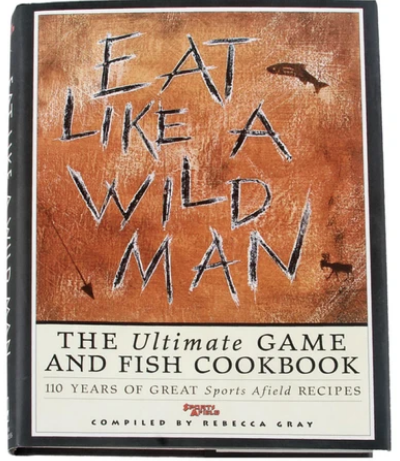 Eat Like a Wildman is a collection of the top rated wild game and fish recipes that Sports Afield magazine has published over the last 110 years. Lifelong food critic and cookbook author, Rebecca Gray selects and infuses a wonderful-tasting standards with her own culinary wizardry and provides instruction on the best methods for preparing fish and wild game to cook. Buy Now
Eat Like a Wildman is a collection of the top rated wild game and fish recipes that Sports Afield magazine has published over the last 110 years. Lifelong food critic and cookbook author, Rebecca Gray selects and infuses a wonderful-tasting standards with her own culinary wizardry and provides instruction on the best methods for preparing fish and wild game to cook. Buy Now

